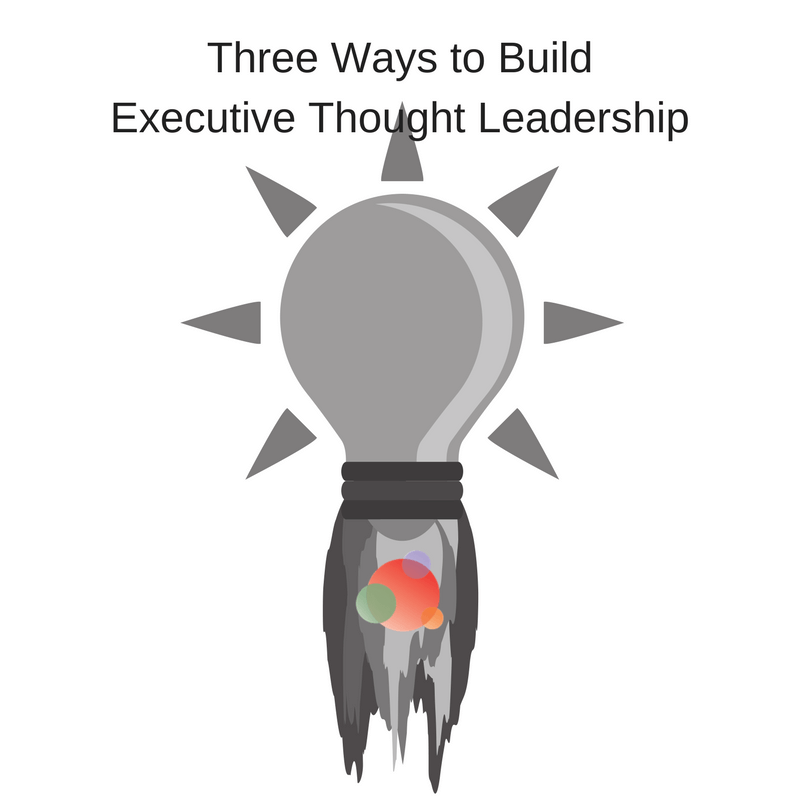 Yesterday, we talked about how difficult it is to gain executive buy-in for something new, such as PESO model implementation.
Yesterday, we talked about how difficult it is to gain executive buy-in for something new, such as PESO model implementation.
I cannot wait for tomorrow’s guest blog post to run.
Katleen Peeters has a great break-down of how they do it, and some of the success they’ve seen.
Until then, I thought it’d be interesting to begin to explore how—once you have executive buy-in (or at least approval to test)—you can get started.
Can We Still Build Executive Thought Leadership?
Last week, we explored thought leadership on The Big Question.
About half of you think thought leadership is dead, while the other half find it alive and well.
No matter what you call it—thought leadership, industry influence, personal branding—it’s still a tactic that serves executives well.
If they have something to say, are willing to be vocal (and do the work themselves), and aren’t afraid to rock the boat.
But it’s even more important to build the thought leadership of a group of your executives, not just the CEO.
Because, what happens when that person inevitably leaves the business?
The thought leadership goes with him or her.
Here are three easy, time and resource effective ways to build thought leadership among a group of executives.
Expand Your Media Training
In many organizations, the CEO is the only executive who gets hands-on media training.
Or media training is thrown together as a response to securing a broadcast interview.
This is better than not doing media training, but it’s not enough.
To effectively expand your company’s industry profile, and shine the spotlight on a larger group of executives, it’s vital they receive media training before you turn them loose.
Your executives may be experts on their area of expertise, but that doesn’t mean they should be set loose to speak on behalf of the company without going through media training.
Even if your goal isn’t to have them appear on broadcast television, this training is still essential.
Media training ensures they are able to:
- Articulate and represent the brand’s messaging platform;
- Respond to criticism or tough questions without tarnishing the brand; and
- Build relationships with the reporters you want to eventually cover them.
Broaden Your Corporate Blogger Pool
Your company blog is the perfect place to lay the foundation for your executive team members’ thought leadership platforms.
Unlike an interview, the final outcome you can’t control, you are able to craft the exact message you want and publish it under your executive’s byline.
Why is this important?
Many bloggers and journalists begin their research with a quick web search.
If your blog is regularly publishing thoughtful, targeted content, it can put your internal experts in front of journalists who cover your industry.
Craft your PR content strategy to include a regular cadence of executive-authored content both on your blog and contributed to relevant media sites.
Encourage Your Execs to Use Social
Although there are conflicting reports on how many of the U.S.’s top executives are regularly using social media, more than 75 percent of B2B buyers and 84 percent of C-level/vice president executives surveyed by IDC use social media to make purchase decisions.
Given that word-of-mouth is perhaps your most powerful marketing channel, it’s in your best interest to have more of your executives actively engaged in social, where they can become part of the conversations others are having around your industry.
By being actively engaged through at least one social channel, your executives have the opportunity to share their expertise and build relationships with customers, industry influencers, and journalists alike.
Being accessible in this way greatly increases the likelihood of your organization being top-of-mind when a journalist is looking for a source.
Or a potential customer is looking for your type of business.
Pulling it All Together
Media training prepares your team to join the public conversation.
Blogging gives them the opportunity to lay the foundation for showing their industry expertise.
Engaging on social media allows them to inject their point-of-view into the conversations.
Building relationships allows for networking, inbound marketing, and sales.
The combination of these three elements provides a strong public identity that your PR team can point back to when they’re pitching the media to cover your company.
With journalists increasingly being measured and compensated on the performance of their content, they’d prefer to interview someone who is a known commodity.
Building a strong public presence for your entire executive team increases the opportunities of your company gaining their attention—and earning that coverage.